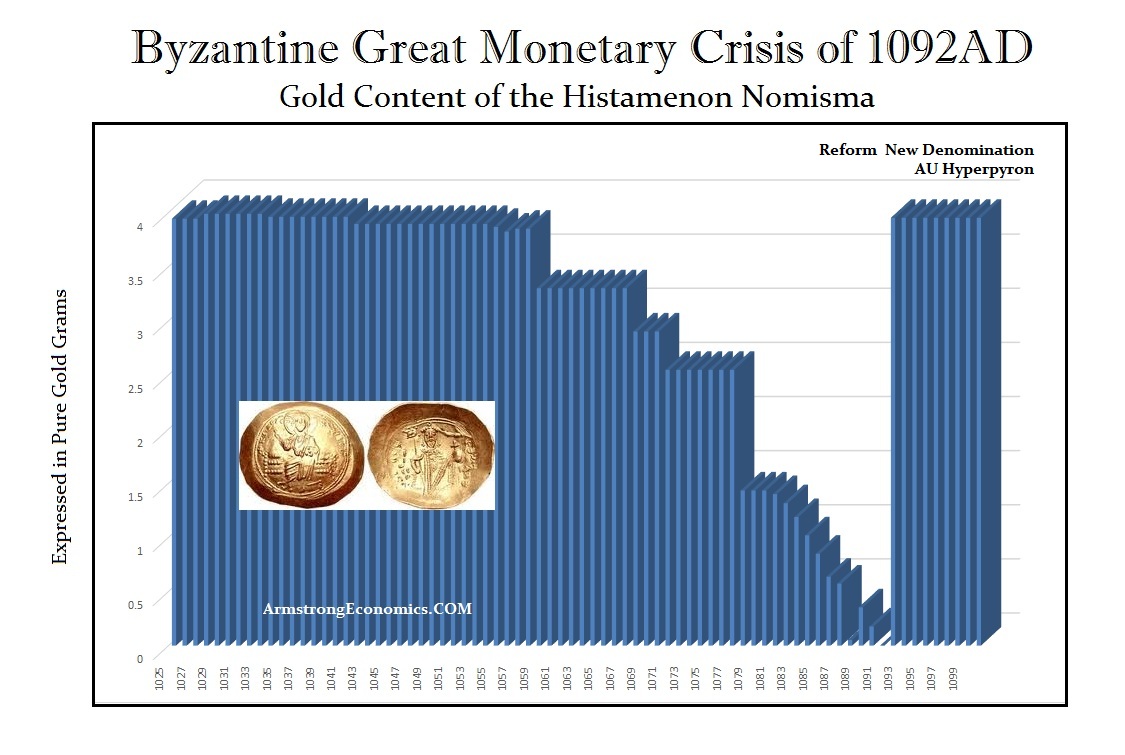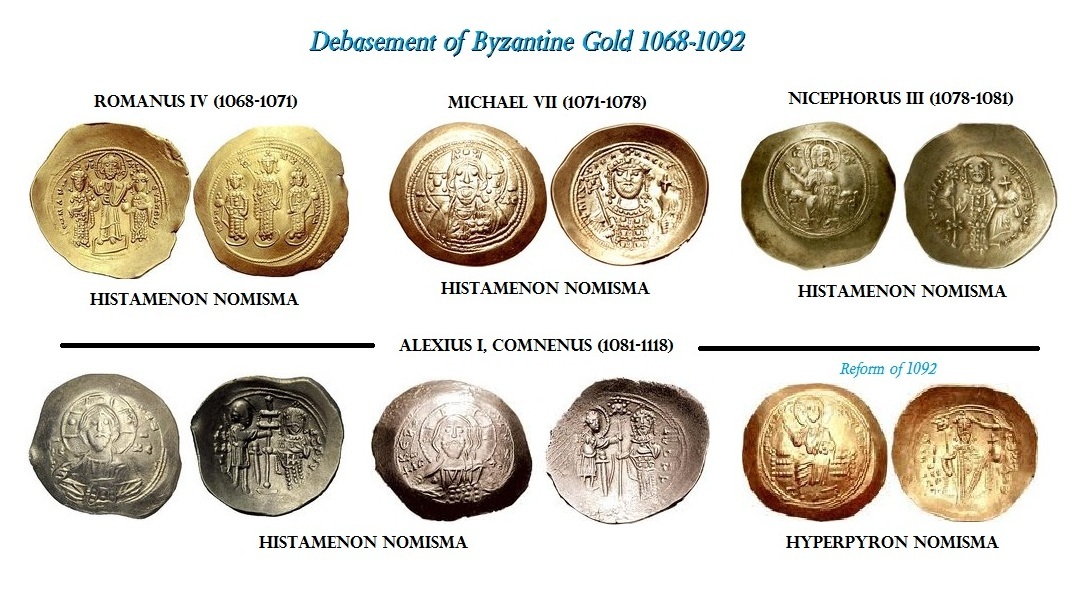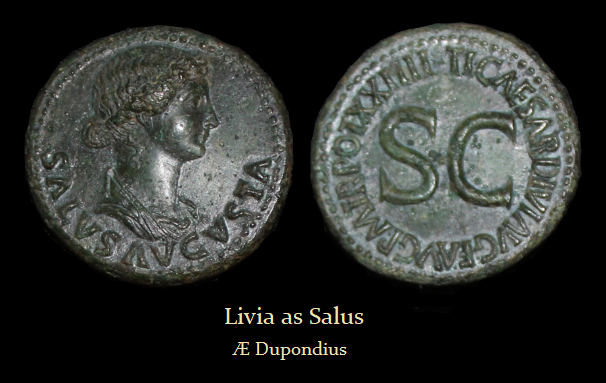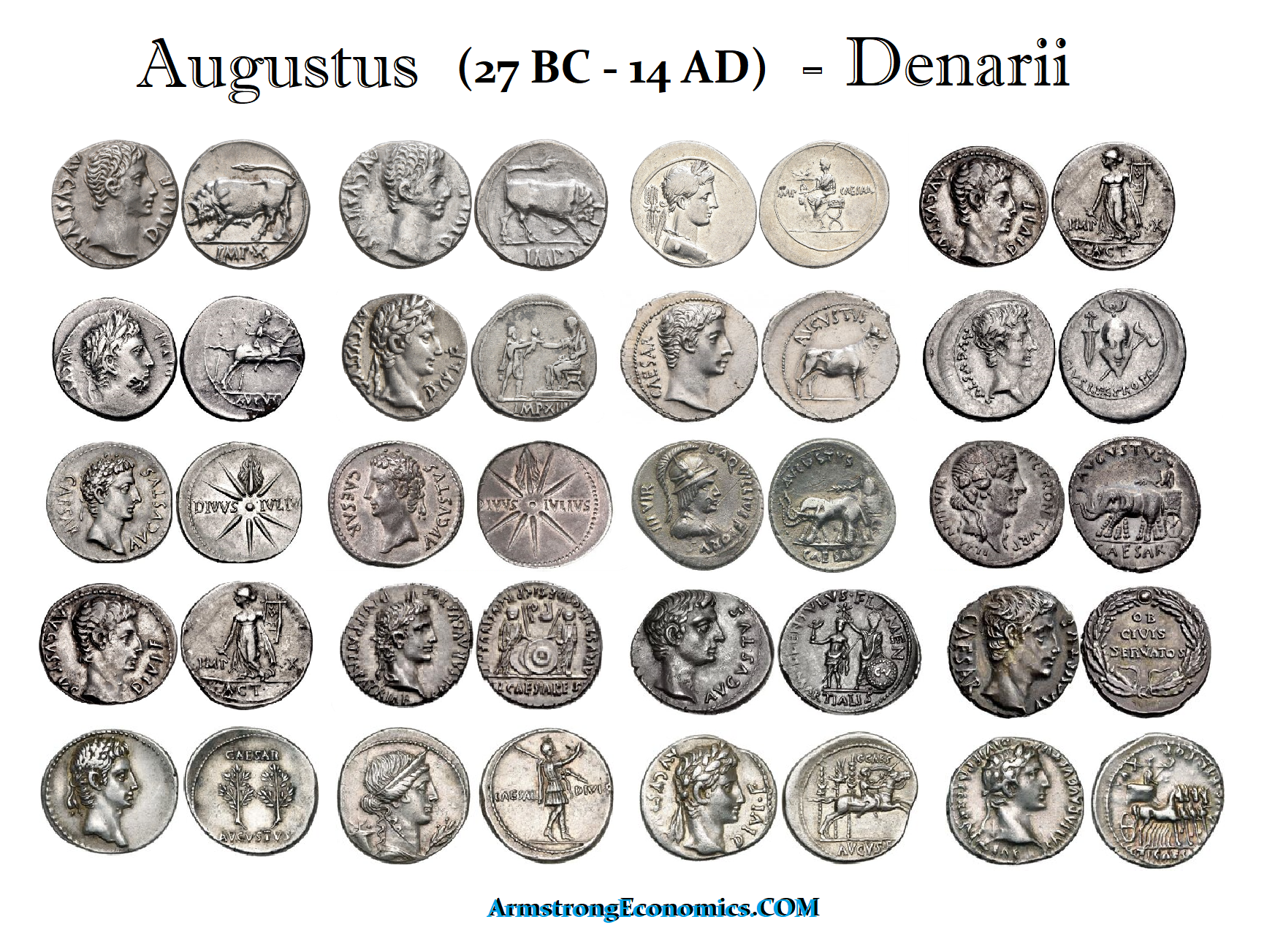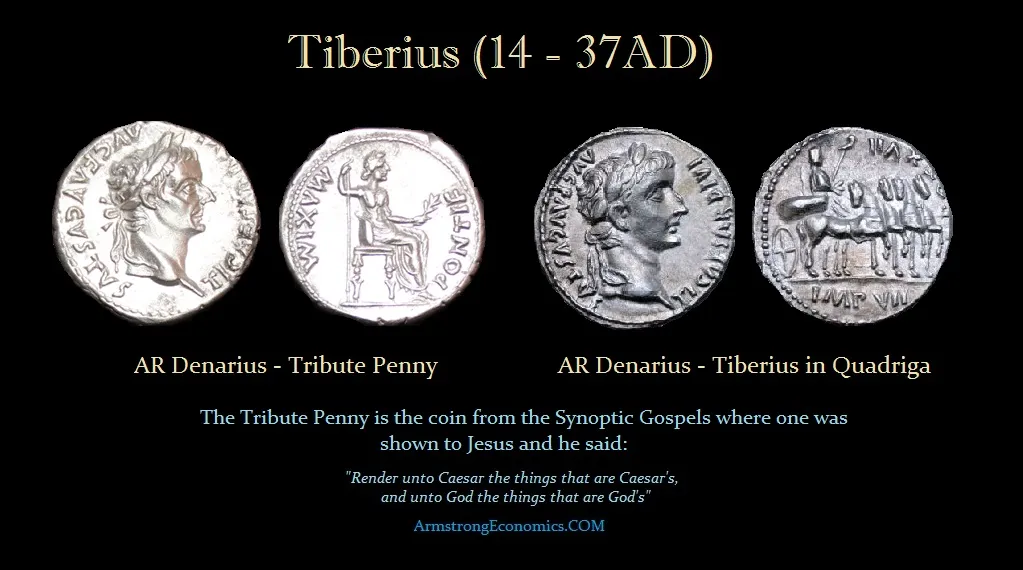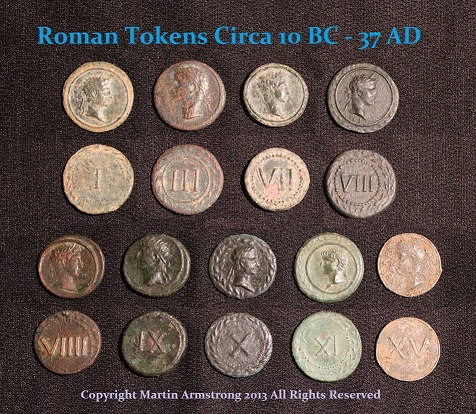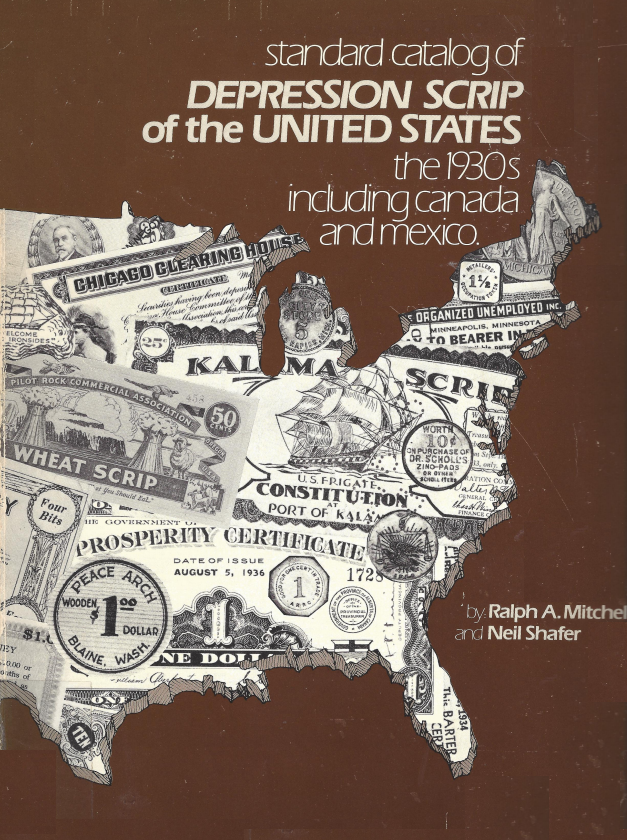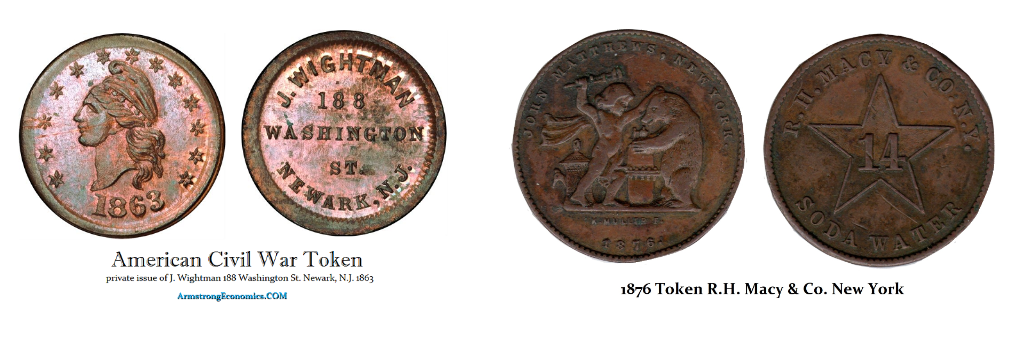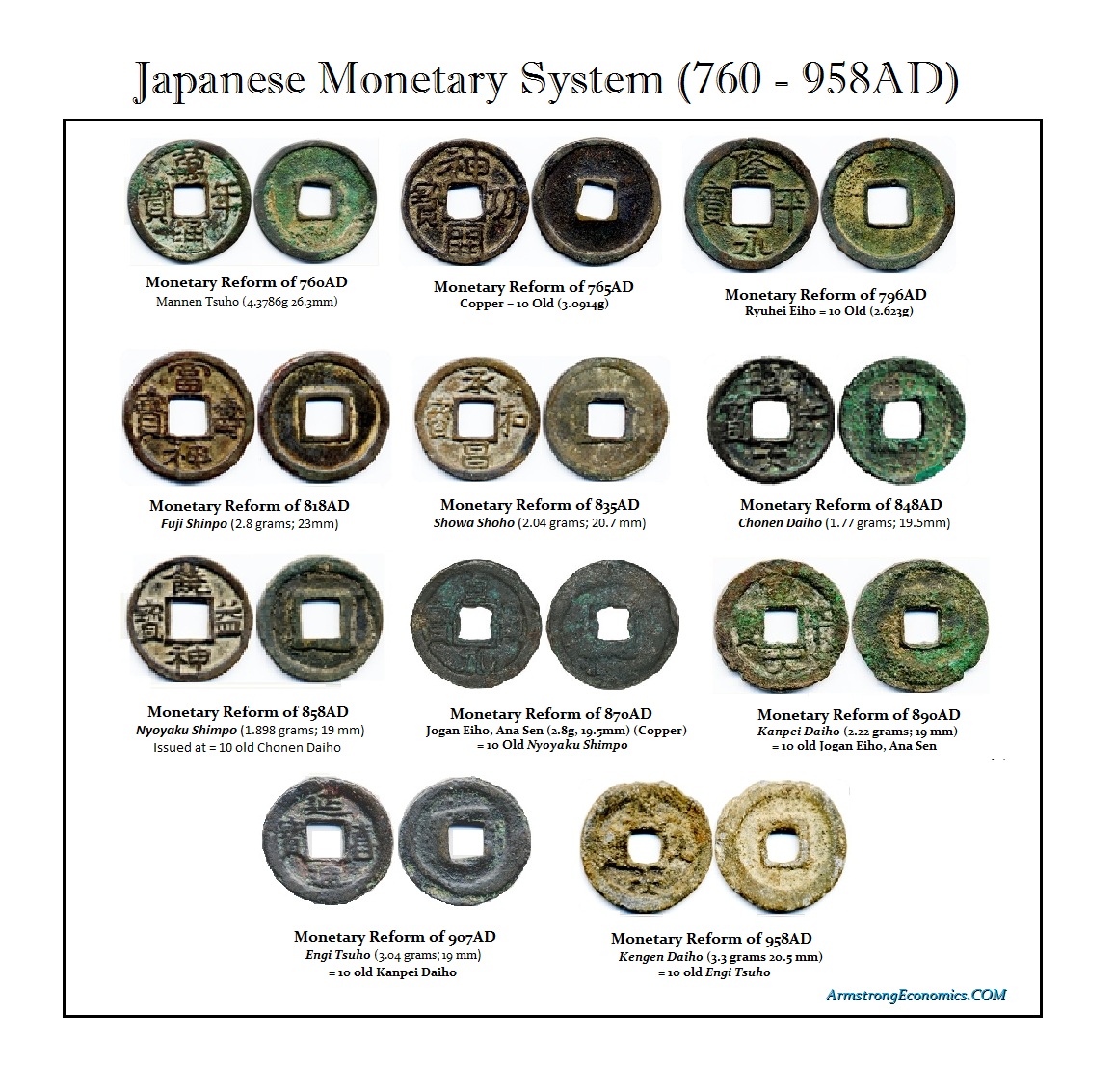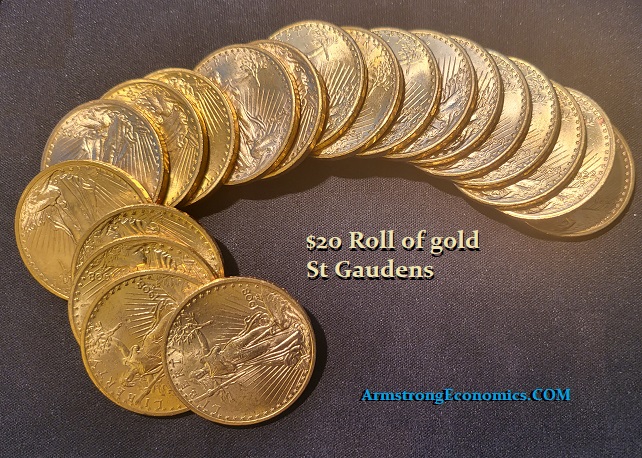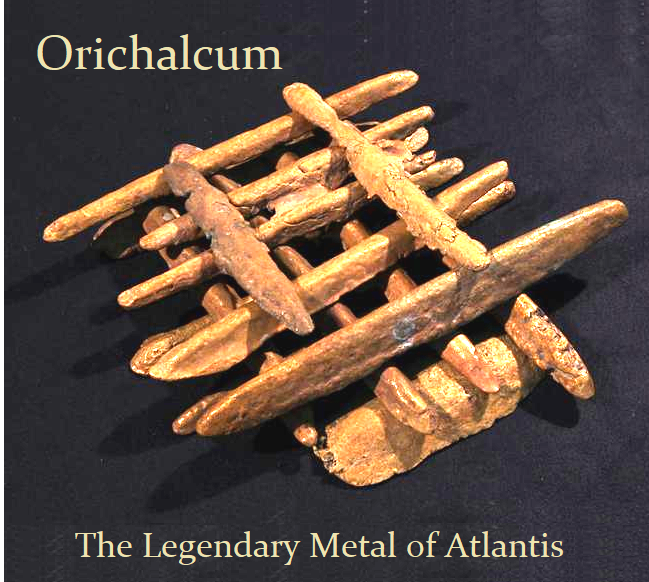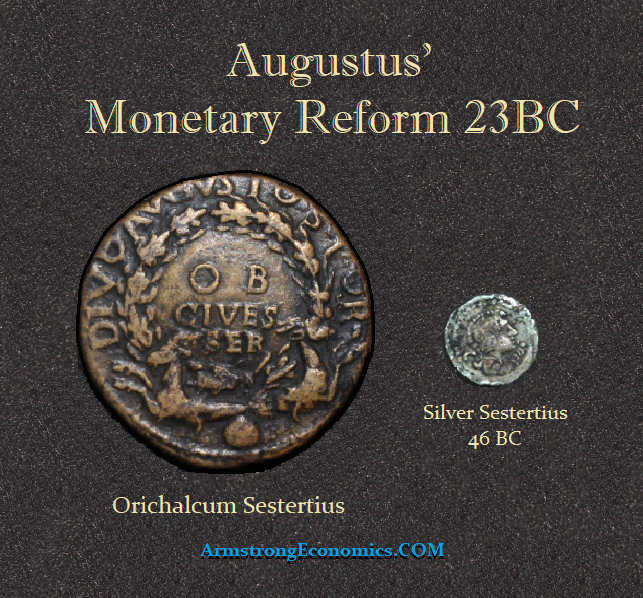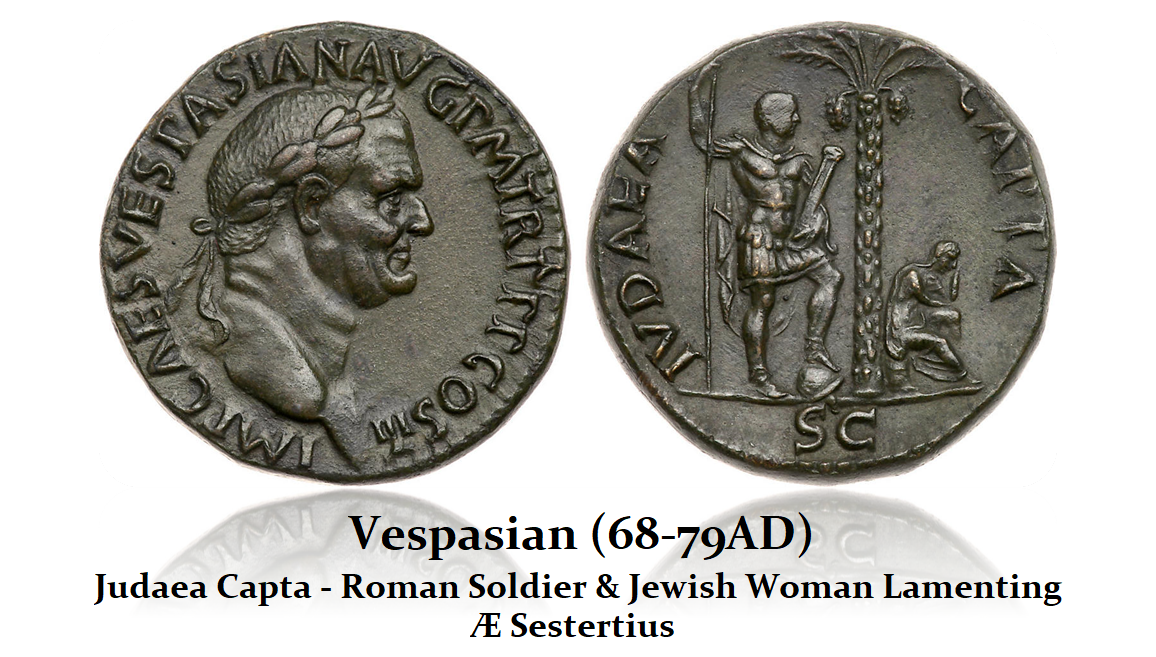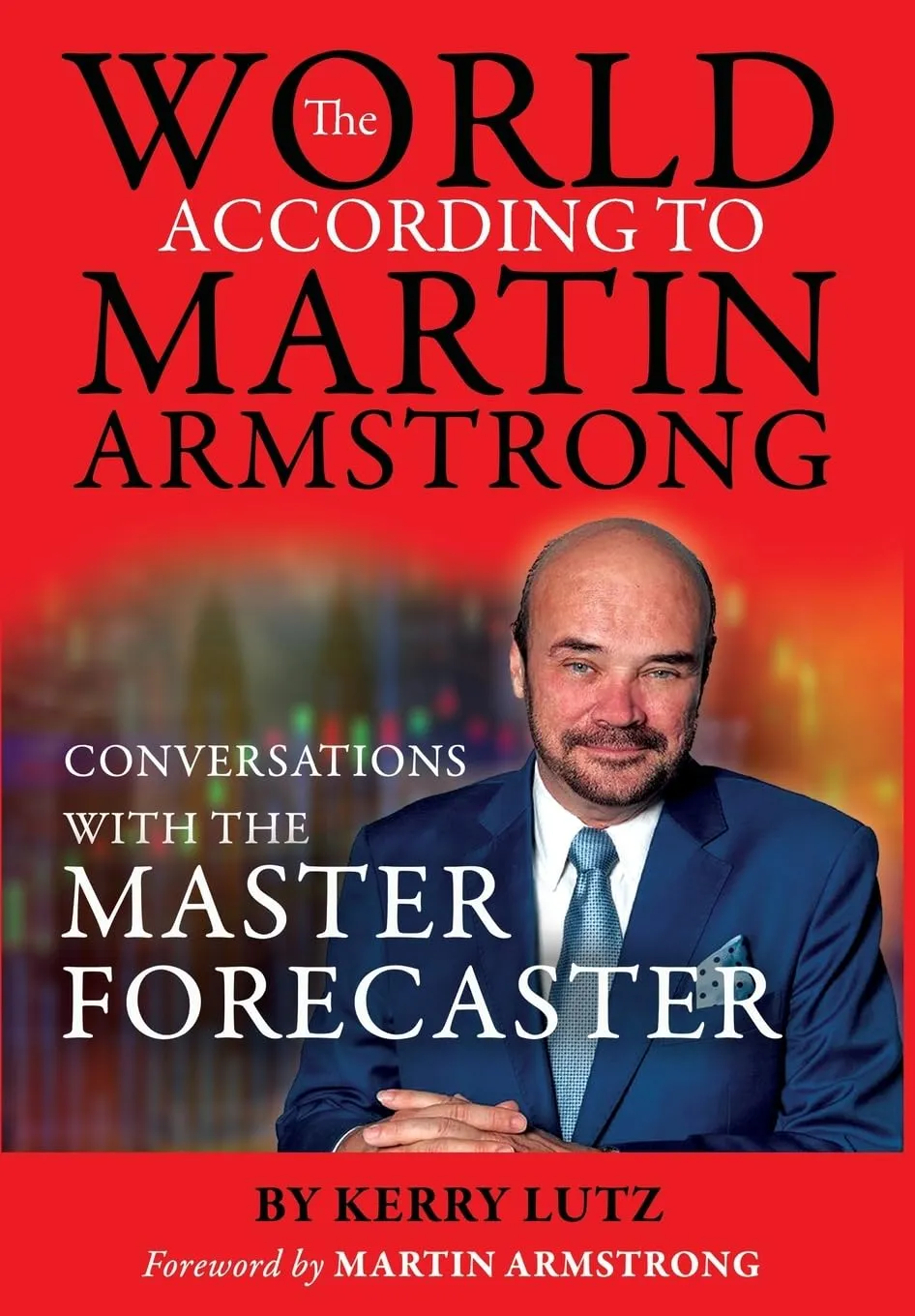QUESTION: Hello Martin,
Been reading your writings with keen interest for over 15 years now since while you were incarcerated.
My question is: The way you paint a picture of the past economies going back hundreds and thousands of years through the discovery of coinage hoards is brilliant. How will a future “Martin Armstrong” from say 500 to 1,000 years from now be able to utilize that methodology of discovering the history of this era when we’re largely a computer digital transaction society? (Especially if government-planned digital currency takes over?)
Thanks. Jerry S.
ANSWER: I know the crypto-people do not like my view that digital currency is entirely dependent upon the power grid and once money is in any official exchange, it will be subject to government regulation. Just look at Tik Tok. The government wants to ban it because they CANNOT get into the data and who is saying what. It has nothing to do with China. They are not interested if you paid the babysitter next door, but Congress is. They have backdoors into everything – not Tik Tok. That has become the hub for many threats to their form of society called the dreaded CONSERVATIVES.
Reading historical accounts of things would never provide the real picture. The coinage has been the breadcrumbs that lead to the truth. I can see the real level of debasement, and when put together with historical accounts, we can get a real picture of history. We must also respect that some periods are black holes and the coinage is what turns on the light.
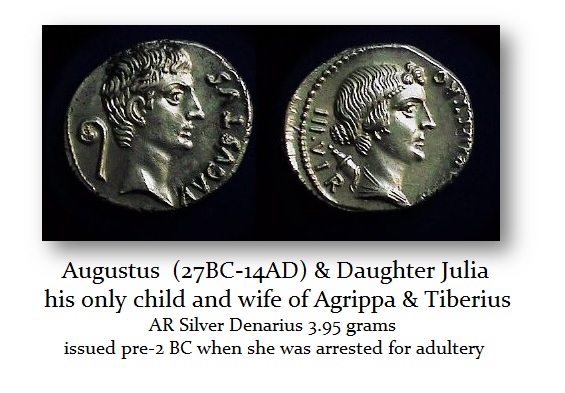 For example, it is the coinage that enables us to confirm much of history and I believe we will see the future follow the past. The reign of Tiberius (14-37AD) should prove to be a blueprint for the future. The wife of Augustus, Livia, the first empress of Rome, was a very powerful woman. The real power behind the throne. I suggest watching the series – Domina. It is far better than any fictional story. It was Tiberius’ mother, Livia, who pushed him to be Emperor.
For example, it is the coinage that enables us to confirm much of history and I believe we will see the future follow the past. The reign of Tiberius (14-37AD) should prove to be a blueprint for the future. The wife of Augustus, Livia, the first empress of Rome, was a very powerful woman. The real power behind the throne. I suggest watching the series – Domina. It is far better than any fictional story. It was Tiberius’ mother, Livia, who pushed him to be Emperor.
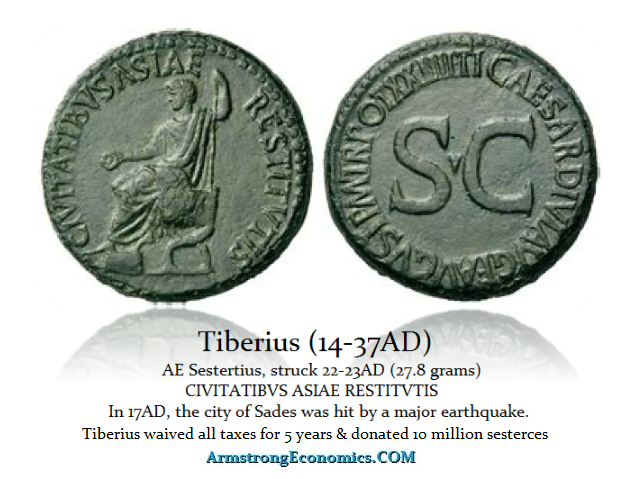 Livia was renowned for her intelligence but was also one of the most beautiful women in Rome. Tiberius was not her favorite – that was his brother Drusus. Tiberius had a son with his first wife Vipsania who was born in 14BC. Livia compelled Tiberius to marry Augustus’ daughter Julia as a way to the throne. Augustus was not fond of Tiberius for he was simply unsocial. His marriage to Julia was like a mixture of oil and water. She sought sexual parties and ignored Tiberius and was finally exiled by her father.
Livia was renowned for her intelligence but was also one of the most beautiful women in Rome. Tiberius was not her favorite – that was his brother Drusus. Tiberius had a son with his first wife Vipsania who was born in 14BC. Livia compelled Tiberius to marry Augustus’ daughter Julia as a way to the throne. Augustus was not fond of Tiberius for he was simply unsocial. His marriage to Julia was like a mixture of oil and water. She sought sexual parties and ignored Tiberius and was finally exiled by her father.
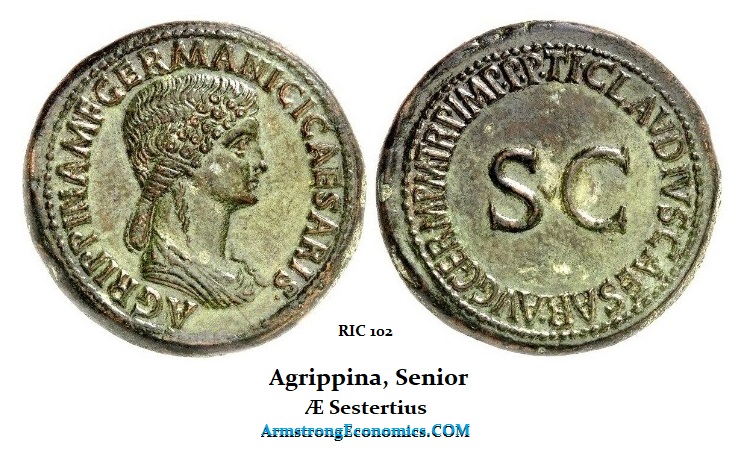 From the coinage, we can confirm that Tiberius responded to a major earthquake that destroyed much of Asia, modern-day Turkey. Tiberius issued coins for the aid of Asia. We also know that he waived all taxes for 5 years and donated 10 million sesterces for relief. What politicians would ever suspend taxes as a tool of relief today?
From the coinage, we can confirm that Tiberius responded to a major earthquake that destroyed much of Asia, modern-day Turkey. Tiberius issued coins for the aid of Asia. We also know that he waived all taxes for 5 years and donated 10 million sesterces for relief. What politicians would ever suspend taxes as a tool of relief today?
Augustus’ heir was to be Germanicus (15BC-19AD) who was the son of Nero Claudius Drusus, the younger brother of Tiberius, and Antonia, who was the daughter of Mark Antony and Augustus’ sister Octavia. He was married to Agrippina, Sr, who was the daughter of Agrippa and Augustus’ daughter Julia from her previous marriage. Agrippina seems to have been the independent-minded woman who blamed Livia for the death of her husband.
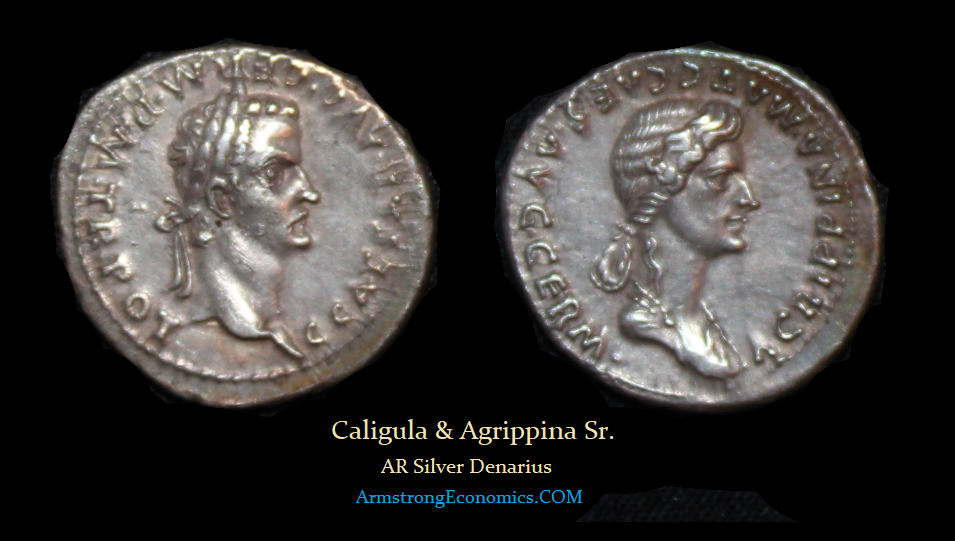 Agrippina, Sr. was such a disruption politically that Tiberius was compelled to banish her like her mother in 29AD where she eventually died of starvation in 33AD. Her son, Caligula, seems to have inherited her insanity, and her daughter Agrippina, Jr, as well. She is actually the first woman on Roman coinage displaying her name. Livia’s portrait would be used but always styled as some goddess.
Agrippina, Sr. was such a disruption politically that Tiberius was compelled to banish her like her mother in 29AD where she eventually died of starvation in 33AD. Her son, Caligula, seems to have inherited her insanity, and her daughter Agrippina, Jr, as well. She is actually the first woman on Roman coinage displaying her name. Livia’s portrait would be used but always styled as some goddess.
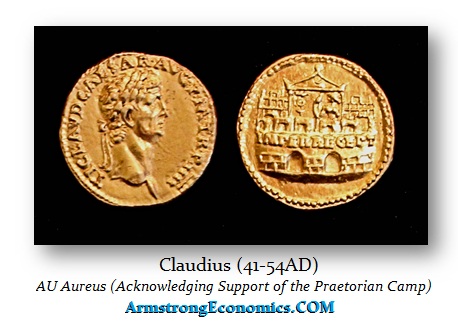 Of course, her son Caligula has warranted films exclusively devoted to his escapades. He is famous for insulting the Senators by making his horse a senator. Caligula was born in 12 AD. He was named as Tiberius’ heir in 37AD and it has been long suspected that Caligula smothered Tiberius to death to take the throne. He was notorious for his depravity and cruelty. He was assassinated by the Praetorian Guard on January 24th, 41AD.
Of course, her son Caligula has warranted films exclusively devoted to his escapades. He is famous for insulting the Senators by making his horse a senator. Caligula was born in 12 AD. He was named as Tiberius’ heir in 37AD and it has been long suspected that Caligula smothered Tiberius to death to take the throne. He was notorious for his depravity and cruelty. He was assassinated by the Praetorian Guard on January 24th, 41AD.
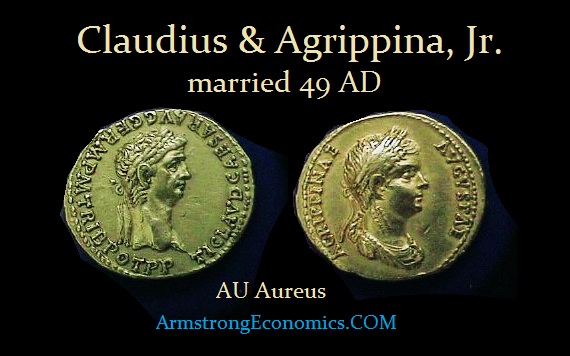 The Praetorian Guard needed an emperor or there was no point in them being the Praetorian Guard. Just like NATO today. If Russia is not the enemy then there is no point in NATO. They turned to Claudius and made him emperor. You can see from his coinage the image of the Praetorian Guard camp on the reverse announcing that he was made emperor by the Praetorians.
The Praetorian Guard needed an emperor or there was no point in them being the Praetorian Guard. Just like NATO today. If Russia is not the enemy then there is no point in NATO. They turned to Claudius and made him emperor. You can see from his coinage the image of the Praetorian Guard camp on the reverse announcing that he was made emperor by the Praetorians.
There is a great series of these events done years ago by the BBC. It was based on the book I Claudius and the series bares the same name – I. Cludius. That too is a worthwhile series that was produced decades ago.
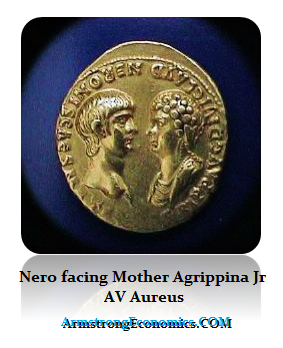 In fact, Agrippina Jr, sister of Caligula, was not only the mother of Nero who ordered her killed for her dominance, but she married he uncle Claudius to secure the throne for Nero. Once again, we find her portrait on coins alongside her son, Nero, which also reflected her dominance and effective rule of the empire. Some have likened her to Hillary Clinton for her cunning and effective rule behind the curtain.
In fact, Agrippina Jr, sister of Caligula, was not only the mother of Nero who ordered her killed for her dominance, but she married he uncle Claudius to secure the throne for Nero. Once again, we find her portrait on coins alongside her son, Nero, which also reflected her dominance and effective rule of the empire. Some have likened her to Hillary Clinton for her cunning and effective rule behind the curtain.
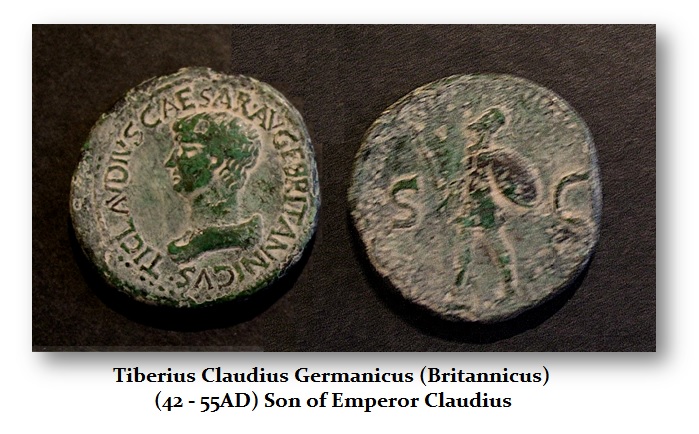 To ensure Nero would become Claudius’ heir, she poisoned Claudius’ son – Britanicus. It shows what a bad apple can do to the whole lot. Many have pointed to the fact that it was the dominance and cunning of the women that brought down the Julio-Claudian Dynasty.
To ensure Nero would become Claudius’ heir, she poisoned Claudius’ son – Britanicus. It shows what a bad apple can do to the whole lot. Many have pointed to the fact that it was the dominance and cunning of the women that brought down the Julio-Claudian Dynasty.
Nevertheless, the coinage not merely confirms history, but also provides a window through time for us to see how human nature never changes, and as such, the future becomes merely a repetition of human contrivances.
To answer the question if future historians will be able to do what I have done if the currency is eliminated and we have just electronic digital currency, I believe the answer lies in the past. We can see something rather astonishing right here during the reign of Tiberius (14-37AD).
Augustus/Octavian (heir to Julius Caesar) became the first emperor of Rome following the defeat of Cleopatra and Mark Antony in 30 BC. He was granted the title Augustus in 27BC by the Senate for saving Rome from the proxy war of Cleopatra who used Mark Antony to try to conquer Rome. However, because he was the first emperor, it appears that he blanked the empire with coinage to justify his position as emperor, not king, which was really the same thing. There are over 500 different silver denarii types. I have never even heard of a collector assembling each type.
Against that backdrop, being indeed a reluctant emperor and forced into an unhappy marriage, it is understandable that being an unsocial workaholic, the circumstances most likely drove Tiberius deeper into seclusion. He rarely left Rome. In fact, he would not even attend the gladiator games. This is the extent of his coinage – two types. That’s it! Instead of the proliferation of coinage under Augustus, spending was curtailed and we can determine that from the coinage, not contemporary accounts. This led to a SHORTAGE of money, and as such a recession. That became the Financial Panic in 33AD.
Because of the shortage of money, this is where we find the first time that the private sector began to issue its own coinage. Some have claimed they were some sort of token. But they are confined to this period of Tiberius where there was a Financial Panic and a shortage of coinage compared to the reign of Augustus.
During the Great Depression, because there too the austerity measures of the government created a shortage of currency. Thus, over 200 cities in the United States began to issue their own currency for local use.
Likewise, during the Civil War, there was also a shortage of money There is a whole array of private coinage during that event. Then there were the hard times that followed the Panic of 1837, Again we have private coinage surfacing. The same again took place with the Panic of 1873.
In Japan, because of the corruption of the government always devaluing the currency of the previous emperor, the Japanese finally just stopped accepting the coinage of their own government. The economy reverted to one of barter and they used the coinage of China. Japan lost the authority to even issue coinage for 600 years until the Meiji Era.
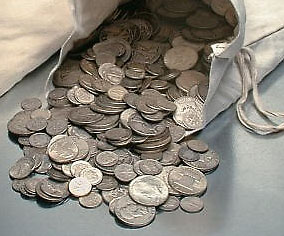 Cryptocurrency will fade with the collapse of governments. It will be too dependent on a unified power grid. If history is any guide, we will return to a barter system combined with perhaps old identifiable coinage that the average person will recognize. Regional currencies will also appear. That is one reason why I do not recommend bars of silver or gold, but the old coinage. Bags of pre-1965 silver coins in the US or similar in Europe and Canada where the average person can look at a date and accept it whereas they cannot tell the difference between a bar of silver or nickel.
Cryptocurrency will fade with the collapse of governments. It will be too dependent on a unified power grid. If history is any guide, we will return to a barter system combined with perhaps old identifiable coinage that the average person will recognize. Regional currencies will also appear. That is one reason why I do not recommend bars of silver or gold, but the old coinage. Bags of pre-1965 silver coins in the US or similar in Europe and Canada where the average person can look at a date and accept it whereas they cannot tell the difference between a bar of silver or nickel.
Do not make the mistake of judging others by yourself. You may know what a bar of silver is, but that will not help you if the other person does not. There are videos on YouTube where people are offered a silver bar or a chocolate bar and they take the chocolate. Not everyone knows what you may know. Keep that in mind.
So at the end of the day, we will have to rebuild society from the ground up post-2032. A currency need not be backed by anything. Its value is ALWAYS based upon a belief system. The same is true with gold and silver. They had no utility value, only as jewelry from the outset. They were valued because at first, the kings reserved gold only for their ornamentation.
Orichalcum, brass, is the legendary metal mentioned in the story of Atlantis in the Critias of Plato. In fact, orichalcum was considered second only to gold in value and it held a greater value than even silver. It was said to have been mined in many parts of Atlantis in ancient times. These ingots of orichalcum were discovered in a shipwreck that had sunk 2,600 years ago, off the coast of Gela in southern Sicily. The ingots are an alloy consisting of 75–80% copper, 15–20% zinc, and smaller percentages of nickel, lead, and iron. In other words, they are brass. Because the color is closer to gold, this was highly prized.
The Greeks rarely used orichalcum for coinage in the Hellenistic world. It was used experimentally by Romans under the reigns of Octavian and Mark Antony. Where we begin to see orichalcum used in the coinage consistently is dated to the monetary reform of Augustus (23 BC). It was then that he introduced sestertii and dupondii struck in orichalcum (Cu-Zn alloy) rather than silver and bronze. The sestertius of the Republican era was a tiny silver coin of about 0.7 grams. Later, the monetary reform Nero made during 63–64 AD, introduced the use of orichalcum to the smaller denominations of the as, semis, and quadrantes.
Following the Civil War with the death of Nero, orichalcum was replaced in the coinage with bronze. It is highly likely that someone figured out how to make orichalcum and its premium just collapsed. Counterfeiters had long figured out how to wrap a copper coin in thin silver and strike it to make it appear it was silver, but also to use chemicals causing the silver to appear on the surface. We cannot rule out that someone had figured out how to make brass and thus it lost its premium.
The value of any currency is entirely based on belief. Once the ancients figured out that orichalcum was just an alloy and could be made, then it no longer seems as more valuable than silver. Even cryptocurrency is worthless. Its entire valuation is simply based on the fact that others believe it has some value. Money at its most basic core during a financial crisis is predicated upon its utility value. Hence, in Japan, bags of rice became money. It is unlikely that even cryptocurrency will survive the transition post-2032. Precious metals ONLY in the form of some recognizable coin will be accepted like the Japanese accepted Chinese coins. Barter will return as it always has. That will most likely be in the form of food.

